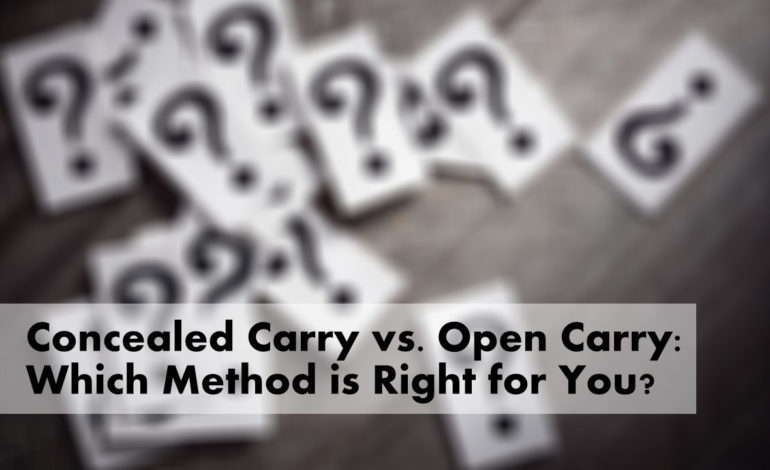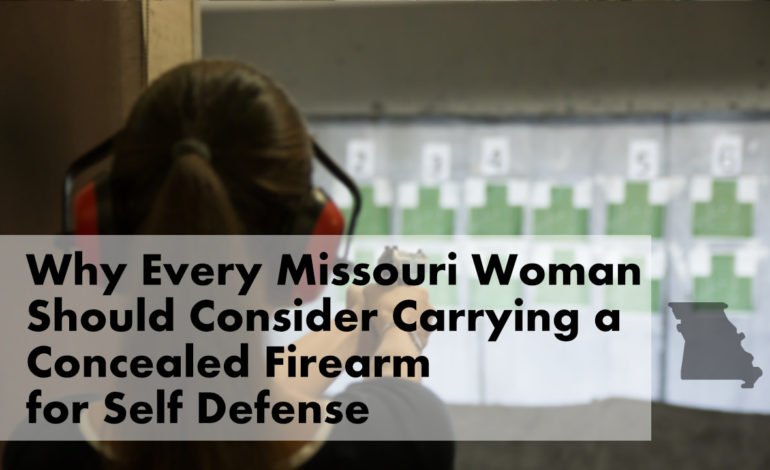Concealed Carry vs. Open Carry: Which Method is Right for You?

Concealed carry and open carry are two different ways that individuals can legally carry firearms for self-defense purposes. While both methods have their pros and cons, there are some key differences between the two that may make one option more appealing than the other depending on the situation. In this article, we will explore the differences between concealed carry and open carry, and the pros and cons of each method.
Concealed carry refers to the practice of carrying a firearm in a concealed manner, such as in a holster or a purse. In most states, concealed carry requires a permit or license, and the process for obtaining one can vary depending on the state. Generally, concealed carry permits require individuals to complete a training course and pass a background check, as well as meet other eligibility requirements such as age and residency.
One of the biggest benefits of concealed carry is that it allows individuals to carry a firearm without drawing attention to themselves or potentially causing alarm in others. This can be especially important for individuals who are concerned about personal safety and want to have the means to defend themselves in the event of an attack.
Concealed carry can also be a more comfortable option for individuals, as the firearm is not visible and can be carried in a way that is comfortable and easy to access. This can be especially important for women, who may have different clothing needs and may find it difficult to conceal a firearm in certain types of clothing.
Another benefit of concealed carry is that it can provide a certain level of anonymity and privacy for the individual carrying the firearm. This can be especially important for individuals who are concerned about potential theft or who want to avoid unwanted attention from others.
However, there are also some downsides to concealed carry. For one, it can be more difficult for law enforcement to identify individuals who are carrying firearms, which can be a potential safety concern. Additionally, concealed carry permits can be expensive and time-consuming to obtain, which can be a barrier for some individuals.
Open carry, on the other hand, refers to the practice of carrying a firearm in plain view, such as in a holster on the hip or in a shoulder holster. In some states, open carry is legal without a permit, while in other states it requires a license or permit.
One of the benefits of open carry is that it can be a more effective deterrent to potential attackers, as the presence of a visible firearm can dissuade criminals from targeting an individual in the first place. Additionally, open carry can be a more comfortable option for some individuals, as the firearm is not hidden and can be carried in a way that is easy to access.
Open carry can also be a more cost-effective option, as it does not require a permit or license in some states. This can be especially important for individuals who may not be able to afford the cost of a concealed carry permit.
However, there are also some downsides to open carry. For one, it can be more intimidating to others, which can cause unnecessary alarm and potentially escalate situations. Additionally, open carry can draw unwanted attention to the individual carrying the firearm, which can be a potential safety concern.
Ultimately, the decision to carry a firearm for self-defense, and whether to do so in a concealed or open manner, is a personal one that should be based on a variety of factors, including the individual’s comfort level, their specific needs and lifestyle, and the laws in their state. It’s important for individuals to carefully consider their options and to seek out training and education to ensure that they are carrying and using firearms safely and responsibly.





